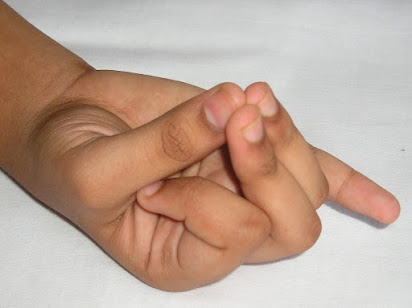Nerve
pain or neuropathy is a common condition that causes numbness, tingling and
pain in the feet, hands and arms. It can also cause weakness or loss of muscle
coordination.
Numbness, burning
sensations, weakness, or pain in your lower back – especially if it
travels down to your buttocks and legs – are all symptoms of sciatica. A chronic issue that affects
millions of people, sciatica pain is caused by injury, inflammation, or
irritation of the longest nerve in the body, the sciatic nerve. If you suffer from sciatic nerve pain, relief is
possible.
Exercises
and stretches relieve sciatic pain when performed regularly and correctly.
Treatment
for nerve pain involves a combination of medication and lifestyle changes.
However, some natural remedies for nerve pain relief can help manage or reduce
the symptoms of neuropathy.
From
vitamin B12 to ginger root, yoga to
dietary changes, these natural remedies can help you manage nerve pain. They
work best as an adjunct therapy to medication, but they may also be effective
on their own.
7 Foods That May Heal
Nerve Damage
·
Leafy Greens: Your
Nerve's Best Friend....
·
Fatty Fish: Omega-3
Boost for Nerve Regeneration....
·
Nuts and Seeds: The
Power of Vitamin E....
·
Avocados: Rich in
Healthy Fats and Potassium....
·
Turmeric: Nature's
Anti-Inflammatory Spice....
· Dark Chocolate: Indulge for Nerve Health.
Mudras to Soothe
Sciatica
“Mudra” is
a Sanskrit term that means “gesture” or “attitude”. Mudras are energy-flowing
postures meant to connect individual ‘pranic‘force with universal or cosmic
force. Mudras are more than practices; they are gateways to inner
transformation. Our hands are a source of tremendous power. A mudra can be a
simple hand position or it can encompass the entire body in a combination of
Asana, Pranayama, Bandha, and visualization methods. Mudras becomes more
effective if you include the relevant Yoga Asana, Pranayama and Meditation in
your daily schedule.
Improved Circulation: The practice of
Hastha Mudras enhances blood circulation to the hands and wrists. Improved
blood flow promotes healing by supplying essential nutrients and oxygen to the
affected areas, aiding in recovery, and reducing pain.
Nervous System
Relaxation: Certain Hastha Mudras encourage relaxation of the nervous
system, including the nerves associated with the wrist and hands. By promoting
a state of calmness and relaxation, these mudras can help alleviate tension and
ease wrist pain caused by stress or strain.
Pain Management: Practicing
Hastha Mudras regularly can act as a natural pain management technique. The
mudras stimulate acupressure points in the hands and fingers, triggering the
release of endorphins, the body's natural pain relievers.
Vayu Mudra – Air Mudra
Technique: Joining the index finger with the root of the thumb
and putting slight pressure on it with the thumb. The remaining three fingers
remain still.
Benefits:
- Regular
practice of this mudra improves gout, arthritis, joint pain, paralysis, Parkinson’s,
sciatica, knee pain and gas formation like diseases
- Relieves
pain in the neck and spine
- Helps blood circulation disorders.
Apana Mudra (Digestive Fire Mudra)

Apana
Mudra is linked to the Apana Vayu, which governs the elimination and downward
flow of energy in the body. It may aid in improving digestion and reducing any digestive discomfort that could
indirectly affect the wrists.
How to Perform:
Sit
in a comfortable position and touch the tips of your middle finger, ring
finger, and thumb together. Extend the other fingers in a relaxed manner. Practice
Apana Mudra for about 5-10 minutes daily, or as needed.
Apana Vayu Mudra
This Mudra can save a person from a heart attack. It is also known as Sanjeevani Mudra since it can revive a dying person. Its effects are immediately visible.
Method:
As the name suggests it is a combination of Apana and Vayu Mudras. Touch the base of the thumb with the tip of the index finger, and touch the tip of the former to the tips of the middle and ring fingers. The practice of this Mudra brings the combined benefits of Vayu and Apana Mudras. It releases the accumulated Vayu Tatva from the body, particularly the chest, and improves the blood circulation in the heart. This immediately relieves the pain and heaviness.
Benefits:
• Brings quick relief from pain if practiced immediately after a person starts
experiencing symptoms of a heart attack – Removes the excess Vayu Tatva from
the stomach – Strengthens the muscles of the heart thereby improving its
functioning (The patient experiences yawning and burping after practicing this
Mudra, which removes the excess Vayu accumulated in the chest region and brings
relief.)
• Helps overcome chest pain, sweating and fatigue – Regularizes irregular
heartbeats
• Removes the obstacles in blood circulation
• Calms down the burning sensation arising from excess Pitta formation –
Beneficial in case of constipation
• Useful in case of toothache
• Improves the functioning of various organs in the digestive system
Merudanda Mudra
Spine is known as Merudand in
Sanskrit. Practice of this Mudra removes the strain experienced in the back. As
a part of this Mudra, both hands are used to make different poses.
Method:
Right hand: Join the tips of the middle and little fingers with that of the
thumb. Let the ring and index fingers remain straight. Left hand: Place the
middle joint of the thumb on the nail of the index finger. Ensure that the tip
of the thumb does not touch. This helps to balance the Tatvas of Akash (space)
and Jal (water). This enables smooth movement of the vertebrae in the spine
with the help of Vayu Tatva (air element). When the tip of the index finger
touches the middle joint of the thumb the level of Vayu Tatva is properly
maintained.
Benefits:
• Helps in removing the strain and pain in the back arising out of cleaning
work, gardening, lifting weights and sitting in front of the computer for long
hours
• Regular practice helps in relieving the pain in the back and waist arising
out of gaps in the vertebrae, slipped disc, sciatica, etc. (Practice this Mudra
daily for 5 minutes followed by 10 minutes of Prana Mudra.)
CONCLUSION:
Mudras are the part of
yoga and it is a contribution of India. The long term practice of
mudra yoga will have lot of health benefits and it should be practiced under
the yoga teacher for better result and proper utilization of mudras. The many Hindu
saints gained highest level of mediation through practicing these mudras
constantly and continuously for many years’ and decades. The research has been
proved the various health benefits of mudras and these mudras are practicing by
lakhs of people’s across India and world. Let’s practice the above mudras and feel the difference. Discover
the power of Mudras to align your body, mind, and soul with the rhythm of the universe.












